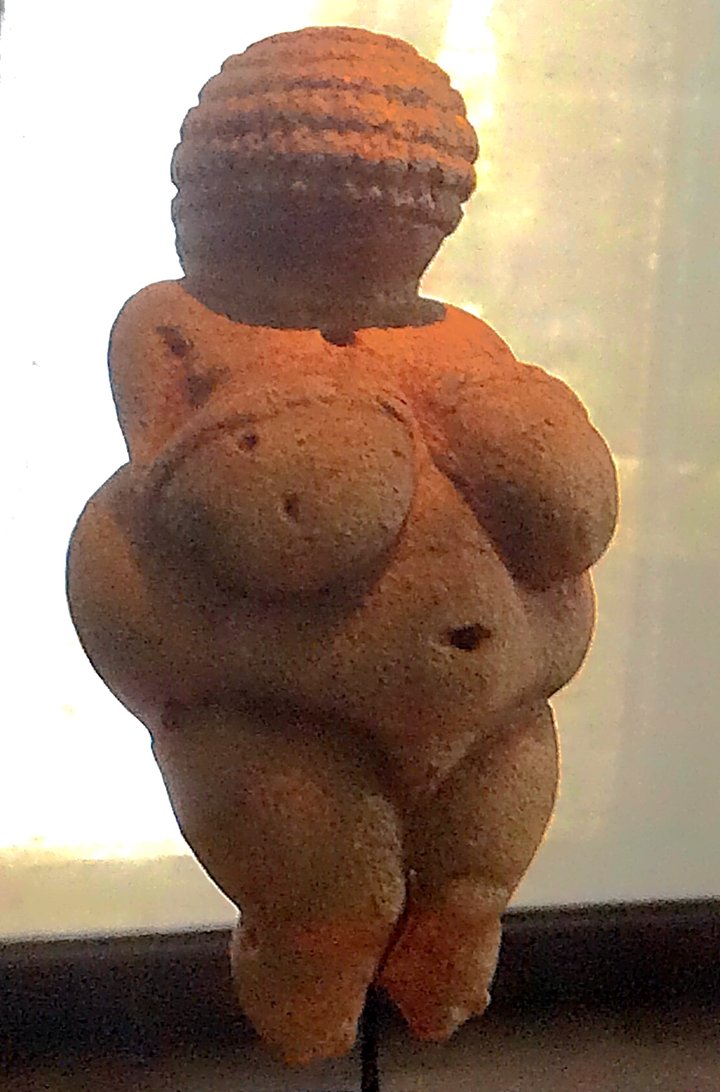“There’s this one culture in New Guinea where women have to give men endless blowjobs because that’s where breast milk comes from.”
(Cynthia Eller, Author of The Myth of Matriarchal Prehistory)
###
While reading a delightful and informative interview with Eller, in which she trashes the idea that women once ruled under the divine protection of an all-loving goddess, I remembered hearing about another BJ myth, the one that claimed that women in Kansas City swallowed semen as a prophylactic against cholera. Another is the old, “It’s healthy protein!” I don’t think it’s hard to guess who dreamed up these “fellatio is good for you” ideas.
The main thrust of the interview, which you can find here, is about how ultra-feminists have glommed on to any and all evidence, no matter how tenuous, that ancient civilizations (those that existed more than five thousand years ago, say) were matriarchal and worshipped a goddess or several goddesses. The evidence is, indeed, scanty.
Take Çatalhöyük, the neolithic city south of Konya in Turkey which was originally excavated in the 1960s by an archeologist who was, according to Eller, “a partisan of this matrilineal theory, so he interpreted everything that way,” finding dozens of female figures that he claimed were goddesses. Thirty years later, Ian Hodder, a Stanford archeologist (perhaps without a feminist axe to grind) re-excavated the city using more modern techniques and found that almost all the female figurines had been thrown onto garbage heaps, including a famous nude woman on a throne. “Very little in the context of the find suggests that they were religious objects,” he says.
Marija Gimbutas, the brilliant Lithuanian archeologist who ended up teaching at UCLA, wrote several “goddess” books, based on her belief that Old Europe was gynocentric, as opposed to the later patriarchal Bronze Age Indo-European people who lived there. She saw “the feminine” in everything! Spirals and dots became Fallopian tubes and wombs, in her interpretations, and every ambiguous figure was – obviously — female, in her view. Eller sees it differently: “…when you actually dissect someone, Fallopian tubes are just teeny, and you wouldn’t notice that they were connected [to the womb].”
Personally, I’m disappointed. I love the idea that our patriarchal, violent, polarized, screwed-up macho world may have once been a sweet place of love and light, informed by such values as kindness, peace and compassion, held together by a sisterhood. Whatever mistakes they made, they couldn’t possibly have made more of a mess of it than we’ve got now, could they? (Bring up “Imagine.”)
“Venus of Willendorf,” a four-inch high figure now in Vienna’s Natural History Museum. Often claimed to be a goddess figure, the little limestone statue dates to about 25,000 years ago. Because of her exaggerated sexual characteristics, archeologists once thought of her as an early fertility deity or mother goddess. (Barry Evans)
Some of the modern claims about prehistoric people worshipping women may have come from a quaint Victorian belief that Stone Age folk didn’t make the connection between copulation and pregnancy and childbirth. The idea was that women, as the sole source of procreation — who needs men?! — should be revered, because without them, the tribe wouldn’t survive. (I’m not saying that women shouldn’t be revered: in my experience most women are far more worthy of reverence than most men.) If semen had any role at all, it was to act as a sort of glue that enabled bits and pieces of the baby-to-be to self-assemble. Or maybe a man dreamt of a baby and, you know, Bam!
But c’mon! Those guys domesticated sheep and goats, dogs, cows and horses. They saw them copulating, they knew which ones had and hadn’t, and they surely made the connection. Something happened to the copulating ones that didn’t happen to the others, which resulted in the young of the species a few months later. QED.
Bottom line: men are good for something, even if it doesn’t involve blowjobs.

CLICK TO MANAGE